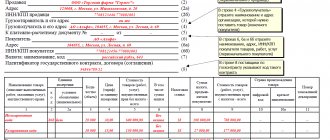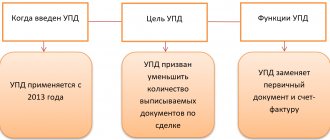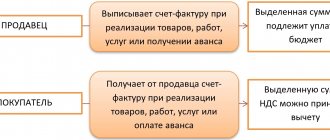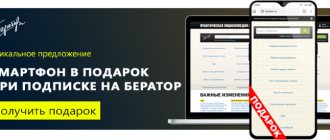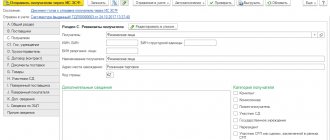Home / Taxes / What is VAT and when does it increase to 20 percent? / Invoice
Back
Published: December 28, 2017
Reading time: 5 min
0
261
An invoice is a universal payment document on the basis of which mutual settlements occur between participants in trade turnover or the market for works and services.
- When and who needs an invoice without VAT?
- How to fill out an invoice without VAT?
Some of these counterparties have the right to fill out this document without indicating value added tax as a result of using the appropriate tax regime or selling goods that are not subject to such tax.
Invoice without VAT: who issues it, registration, filling out
- company tax identification number;
- full name of the organization in Russian;
- subject of the Russian Federation in which the organization is located.
On the seals of branches, in addition to the required data, the name of the structural unit is indicated.
The nuances of the use of seals by officials are recorded in the administrative documents of the organization. The use of reproduction of a print or signature by mechanical copying is not permitted.
According to paragraph 3 of Article 168 of the Tax Code of the Russian Federation, the organization is obliged to issue an invoice to the buyer no later than 5 days from the date of shipment of goods or provision of services.
Features of an invoice without VAT in 2017-2018 (sample)
If an entrepreneur changes the external form of the paper, this should not violate the existing sequence of data and indicators. To minimize the likelihood of errors, it is recommended to use an approved document form. Not all fields of the invoice are filled in in each specific case. If the necessary information to be entered in the appropriate fields is not available, dashes are placed in them. For example, column 6 is filled in only by organizations that pay excise taxes on these transactions. If the company does not fall under this concept, a dash is placed in the column.
Do I need to issue an invoice without VAT?
Wrong actions can lead to the fact that the company will be obliged to pay VAT even in cases where it could have avoided additional expenses. For this reason, experts advise studying in advance a number of relevant information that will help the entrepreneur minimize the likelihood of errors. Application by law To become familiar with the nuances of using an invoice when calculating VAT, you need to study Letter of the Ministry of Taxes of the Russian Federation No. VG-6-03/404. It states that an invoice is a document that serves as the basis for accepting the presented tax amounts for deduction or reimbursement. The paper has an approved form. In addition, there are rules for maintaining invoice journals. If a document was drawn up or issued in violation of the established rules, it cannot be used to obtain a deduction or refund of tax.
Features of an invoice for VAT calculations
The forms of extracts of these documents are not regulated by legislators. You can transfer the indicated documents by visiting the tax service in person. You can also transfer the documentation through Russian Post by issuing a registered letter with an inventory and notification of delivery. If all the listed actions and conditions are met by the taxpayer, then he can enjoy the right to tax exemption for 1 year (or until the conditions are violated). Throughout this period, the obligation to issue VAT-free invoices to customers remains. If at the end of the year the company can still take advantage of the VAT exemption, then it must again inform the tax authority of its right - no later than the twentieth day of the next month. The list of documents is similar to the primary notification.
If sales are without VAT, do I need to issue an invoice?
Answers to questions on the topic: invoices and other VAT documents. You can also transfer the documentation through Russian Post by issuing a registered letter with an inventory and receipt of receipt. If all the listed actions and conditions are met by the taxpayer, then he can enjoy the right to tax exemption for 1 year (or until the conditions are violated). Throughout this period, the obligation to issue VAT-free invoices to customers remains.
Advance invoice: when issued This situation arises, for example, in relation to the supply of electricity, payments for which are carried out at unregulated prices. When the supplier knows the final cost, he needs to draw up an adjustment invoice3. But in another, at first glance, seemingly similar situation, officials decided differently. Content:
- In what cases is it necessary to issue an invoice to the buyer?
- Who is obliged to pay VAT?
- The supplier issued an invoice with VAT
- Invoice without VAT: who issues it, registration, filling out
- Answers to questions on the topic: invoices and other VAT documents
- Advance invoice: when is it issued?
- Invoices: adjustment or correction?
- VAT: the most special and complex tax
In what cases is it necessary to issue an invoice to the buyer? When an advance payment is received for the supply of goods (performance of work, provision of services), the sale of which is subject to VAT at a zero rate, there is no need to pay VAT on the advance received (Clause 1 of Article 154 of the Tax Code of the Russian Federation) . With regard to export operations, paragraph 1 of Art. 164 of the Tax Code of the Russian Federation establishes a VAT rate of 0 percent.
Principle of compilation The object of VAT taxation is the transfer of property rights and the sale of goods and services in the domestic market of the Russian Federation. When selling them, the seller is obliged to present the buyer with the amount of tax to be paid. Manipulation is carried out by issuing an invoice.
The order in which the document is drawn up depends on a whole list of factors. The following nuances are taken into account:
- whether the seller is a VAT payer;
- agreement conditions;
- type of contract;
- payment procedure.
An invoice is a document that serves as the basis for the buyer to accept the goods (works, services) presented by the seller, property rights of VAT amounts for deduction (clause 1 of Article 169 of the Tax Code of the Russian Federation). We will tell you in which case an invoice is issued without VAT and how it is filled out in our consultation.
If you issue an invoice with VAT
Some organizations, on their own initiative, may issue invoices, highlighting VAT. In this case, they are required to pay tax to the budget and also submit a VAT return to the Federal Tax Service. This must be done before the 25th day of the month following the quarter in which the document was issued. For example, a company issued an invoice using the simplified tax system on February 10, 2021; accordingly, it must submit a VAT return by April 25, 2021.
It is important to understand that issuing an invoice with allocated VAT does not give the simplifier the right to a tax deduction on purchased goods. Only VAT payers have the right to such a deduction, and organizations using the simplified tax system are not such.
When is an invoice issued without VAT?
Let us remind you that in general, organizations and individual entrepreneurs have the right to be exempt from fulfilling VAT obligations as a taxpayer if, over the three previous consecutive calendar months, the amount of revenue from the sale of goods (work, services) excluding VAT did not exceed a total of 2 million rubles (p 1 Article 145 of the Tax Code of the Russian Federation). We talked in more detail about VAT exemption in a separate consultation.
An individual entrepreneur invoice is a document that allows you to receive a VAT deduction from the Federal Tax Service. According to current regulations, document flow must be carried out with a minimum number of errors during registration. An entrepreneur, according to the area of activity regulated in the Tax Code of the Russian Federation, can work both with and without VAT. It is necessary to determine whether the absence of a tax amount in the invoice is allowed or if VAT is not paid, it is not necessary to issue it.
Invoice with o
You are not required to issue an invoice from the company using the simplified tax system. Only companies exempt from VAT put this mark. Organizations that are considered exempt from VAT are recognized in accordance with Article 145 of the Tax Code of the Russian Federation.
Companies that apply the simplified tax system do not qualify as such “exempt” payers, since they are not initially payers of this tax. Accordingly, there is no need to issue a “simplified” invoice marked “without VAT”.
Some counterparties still insist on an invoice. Such companies should keep in mind that they will not receive a deduction for “input” VAT on such an invoice. And why they continue to demand such invoices is not clear.
“Simplers” are not obliged to fulfill such a request. They have the right to explain to their counterparties that in order to post the purchased goods, documents such as an invoice for payment, an invoice and a statement will be sufficient. And if the counterparty continues to insist and it is impossible to convince him, then you can issue the required document. Please indicate that the purchase does not include VAT.
Such registration of an invoice will not entail obligations to pay tax, as well as the preparation and submission of a VAT return, since the tax will not be highlighted in the invoice (
The essence and role of an invoice
An invoice is drawn up by the seller and transferred to the buyer no later than 5 days after the transaction and is confirmation of the provision of services or the supply of goods.
According to Decree No. 1137 of December 26, 2011, an invoice can be presented on electronic or paper media with equal legal force. Invoices generated digitally must be certified with an electronic digital signature (EDS). It is possible to draw up a corrective document, both separately for the advance payment for delivery and the total paid invoice when releasing goods on prepayment.
Based on its purpose, an invoice must be prepared by all legal entities and individual entrepreneurs who pay VAT to the state budget in the amounts prescribed by law.
Regulatory support for the procedure for generating invoices for an entrepreneur and reflecting the facts of economic activity is provided in the Tax Code of the Russian Federation:
- Articles 168-169, which provide information on the rules of compilation, types, including the legality of creating an electronic version and types of business activities exempt from VAT.
- Paragraphs 11 and 26 of Article 346 determine the obligation to issue documents or its absence under different taxation regimes;
Additionally, the Order of the Federal Tax Service No. ММВ-7-69/3 dated February 27, 2014 defines the procedure for drawing up invoices of all types and formats.
Please note that starting from the 1st quarter of 2021, an invoice must be provided using a new form.
If the individual entrepreneur is on the general taxation system, then invoices must be issued, regardless of the type of activity, within 5 days.
All generated documents are reflected in the Purchase and Sales Books. The purchase book is a register of invoices received from third-party market counterparties for which the tax was paid. The sales book reflects the individual entrepreneur's accounting of all issued documents, on the basis of which the VAT deduction is calculated.
Should I include an invoice without VAT from an individual entrepreneur using the simplified tax system in the purchase book?
As a general rule, the buyer records invoices received from sellers in the purchase ledger. Based on these records, he determines the amount of VAT deduction. In a zero invoice situation, the buyer does not receive a deduction. Do such invoices need to be reflected in the purchase ledger?
We will not find direct wording that invoices received from sellers with the inscription “Without VAT” do not need to be reflected in the purchase book in the Rules for maintaining a purchase book (approved by Decree of the Government of the Russian Federation dated December 26, 2011 No. 1137).
But there are many indirect clues there. In particular, from these Rules it follows that:
- the purpose of the book is to register invoices for the purpose of determining VAT deductions (clause 1);
- invoices are registered in it as the right to deduction arises (clause 2 of the Rules);
- Clause 19 contains a closed list of situations when an invoice should not be registered in the purchase book.
As a result, the conclusion suggests itself: since a zero invoice does not increase the amount of VAT deduction, there is no particular point in registering it in the purchase book. It is possible, for example, not to reflect in the purchase book an invoice received from an individual entrepreneur using the simplified tax system without VAT.
There is no penalty for such failure to be reflected in the law. Although there is arbitration practice to challenge tax authorities’ claims for incorrect maintenance of purchase books by VAT payers. But the courts are against the fine (see, for example, the resolution of the Federal Antimonopoly Service of the Volga-Vyatka District dated June 30, 2006 No. A79-15564/2005).
Procedure for filling out an invoice without VAT
In 2021, there have been many changes in the regulatory framework of accounting and tax accounting that need to be applied.
Starting from January 1, 2021, individual entrepreneurs on OSN and special regimes are exempt from maintaining registers that duplicate the information reflected in the Book of Purchases and Sales. However, as before, all registration books are provided by those, regardless of the taxation system, who provide intermediary and audit services or are developers, and also enter into commission and agency agreements.
This obligation is specified in Article 174 of the Tax Code of the Russian Federation.
Detailed filling procedure, which regulates the content of the following information:
- serial number and date of invoices;
- full name and tax identification number of the supplier and buyer;
- name and quantity of goods supplied or services provided;
- cost, in Russian rubles, for one unit and the entire batch;
- the tax rate in effect on the date of the transaction;
- the amount of tax to be transferred to the budget;
- information about the sender and recipient of the cargo;
- if the vacation was made on an advance payment, you must indicate the date and number of the payment document;
- unit of measurement of goods. Not specified when providing services.
Information in accordance with Article 169 of the Tax Code of the Russian Federation must be contained in electronic and paper format. When generating a paper invoice, it is necessary to generate 2 copies, one is received by the seller, the second is given to its customers.
I know that VAT is a value added tax. What does it mean?
This means that, as a result, companies pay tax only on the markup, and not on the entire cost. But this does not always work out: only if the supplier and buyer both work with VAT. Why in this case it is unprofitable to work with the simplified tax system or a patent we will explain below.
Most often, VAT is paid at a rate of 20%, but there are also preferential rates for products important to life.
Zhenya sold the lamps for 18,000 rubles, including VAT of 3,000 rubles. But before that, he bought a llama: for 12,000 rubles, including VAT of 2,000 rubles, which he can deduct. As a result, he will pay VAT only 1,000 ₽ (3,000 - 2,000).
Who may not issue an invoice?
According to the Tax Code of the Russian Federation, tax is not paid:
- working in retail trade;
- employed in public catering;
- providing services for cash only;
- operating in the securities market and selling shares and bonds;
- selling goods to consumers who use preferential tax regimes.
Details are provided in Articles 168 and 169 of the Tax Code, which reflect nuances depending on the chosen taxation system.
Under the special regime, tax is not paid, which is reflected in the reporting provided. Special regimes include simplified taxation system, UTII, unified agricultural tax.
However, according to paragraphs 11 and 26 of Article 346, individual entrepreneurs can generate and issue invoices without indicating the amount of value added tax.
If an invoice is generated incorrectly, namely indicating VAT in it, if the individual entrepreneur is not a tax payer, it will be necessary to pay it and report to the Federal Tax Service.
Do I need an invoice if a sole proprietor works without VAT?
In this case, the company will have to pay value added tax for the goods specified in it and generate a corresponding tax return.
Taxation systems Russian regulatory documents consider it possible for firms to use not only the general tax payment regime (OSN) to the treasury, but also simplified systems - UTII, simplified tax system, unified agricultural tax and the patent system. It is advisable to consider each of them in more detail. OSN is a general tax collection regime used in relation to those companies that, during registration or already in the course of their activities, did not express their desire to switch to special regimes. In case of OSN, the following obligatory payments must be made to the treasury: Of all these types of tax deductions, the most significant in terms of the volume of payments and the complexity of administration is VAT. That's why companies are looking to move to simplified systems. Important: This information subsequently goes into your tax return. All LLCs and individual entrepreneurs that, in the course of their activities, make mandatory payments to the treasury on the basis of the simplified tax system are not required to issue invoices (Article 346.11 of the Tax Code of the Russian Federation). This is due to the fact that VAT is not charged on their transactions. Attention: At the same time, such agents issue invoices using the simplified tax system for goods that are imported into the customs territory of the Russian Federation (Article 174 of the Tax Code of the Russian Federation). Thus, in general, entrepreneurs should not compile this important document, as well as maintain it after its presentation or receipt of the book of purchases and sales. However, in practice there are a number of specific cases that provide for different conditions.
Who issues Initially, you should indicate those companies on the simplified tax system (LLC and individual entrepreneurs) that are exempt from the obligation to prepare invoices. These include (Art.
Consequences of errors in invoices
Paragraph 2 of Article 169 of the Tax Code of the Russian Federation clearly defines on the basis of which errors a VAT refund can be refused, and which are not recognized as significant and do occur.
The task of the tax authorities is to control the timely receipt of taxes to the budget, increase their amount, prevent non-payment and reduce the amounts subject to deduction. If a specialist from the department identifies inaccuracies or typos, he will form a negative conclusion and no VAT deduction will be made.
If an employee of the Federal Tax Service was able to identify the participants in the transaction by name or tax identification number, type of product or service and their cost, amount and amount of tax, then I have no right to refuse a VAT deduction.
The signature on the documents must be affixed with your own hand; the use of a facsimile may be regarded as an error in the preparation of the document. Judicial practice proves the opposite; however, to save time on communicating with the tax service, endorse the documents yourself or by third parties, if they have the authority.
Of course, subsequently, after identifying any errors, it will be necessary to make changes to the counterparty’s registration card in order to avoid misunderstandings and controversial situations with government agencies in the future.
How to calculate the amount of VAT payable to the budget?
When you sell goods or services with VAT at the request of a client, to calculate the amount of tax, multiply the cost of goods or services by a rate of 20% or 10%. Since VAT deductions cannot be applied under special regimes, at the end of the quarter, transfer the entire allocated amount of VAT to the budget.
VAT rates:
- 20% – general rate;
- 10% for certain groups of goods: some products, children's products, medical products;
- 0% for rarer operations.
For transactions of a tax agent, the VAT amount is calculated from the payment amount that is transferred to the seller. This may be the amount specified in the contract, or the amount of the monthly payment when renting from government agencies. Important: the amount of VAT must be withheld from the seller, which means that the calculated rate of 20/120 or 10/110 is used to calculate the tax.
